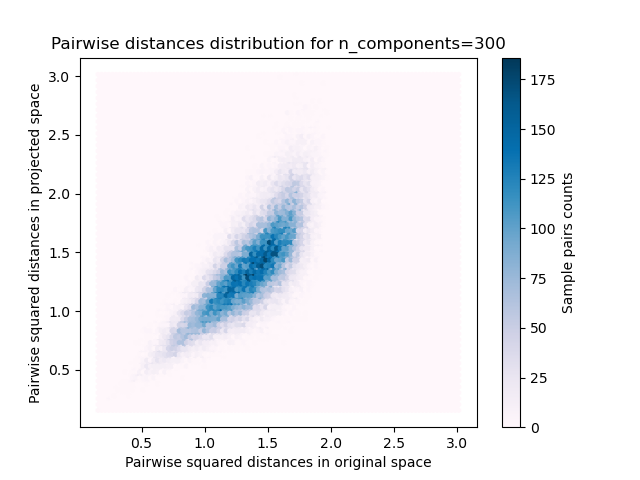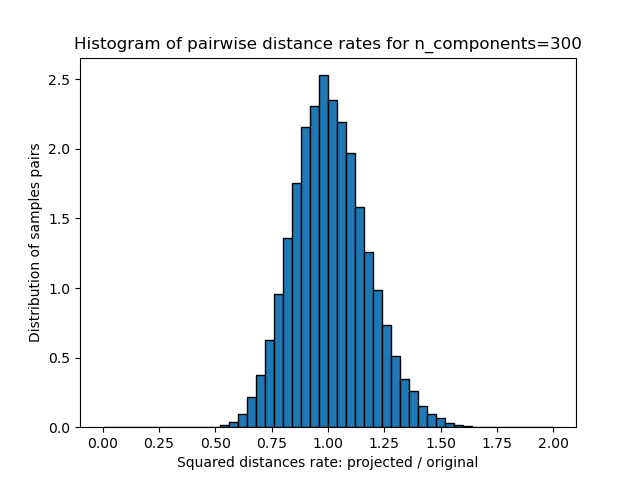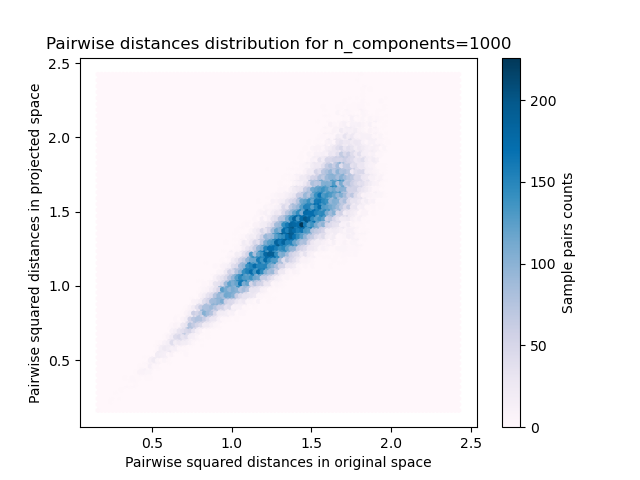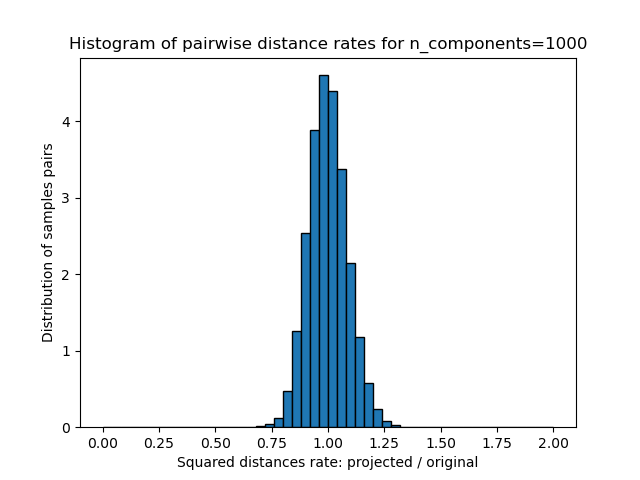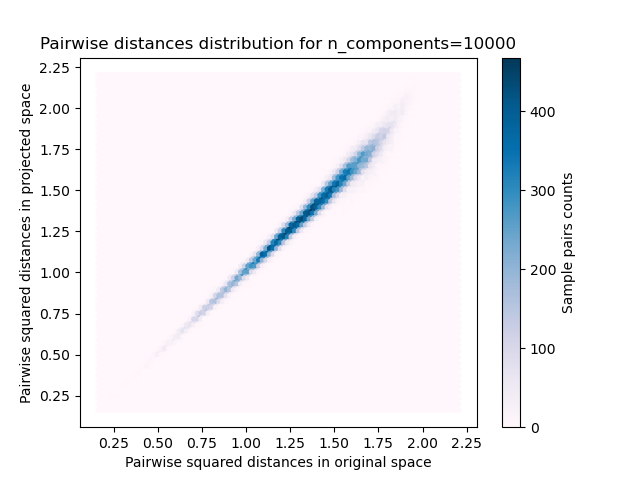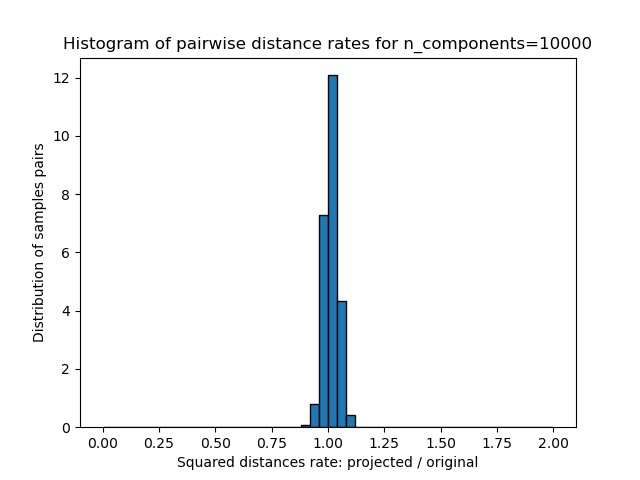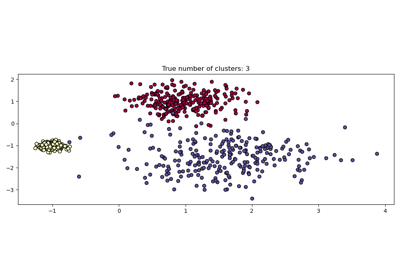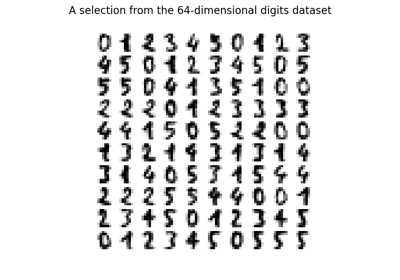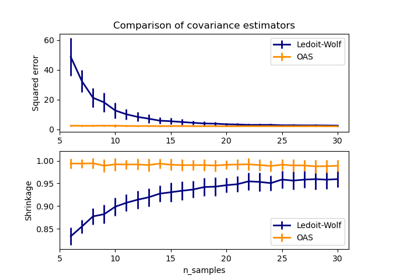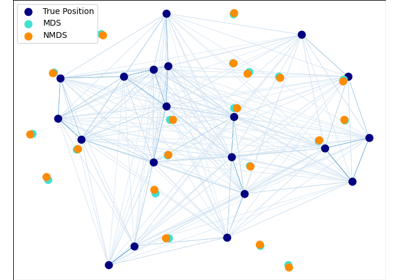注意
转到末尾 下载完整的示例代码或通过 JupyterLite 或 Binder 在浏览器中运行此示例。
使用随机投影进行嵌入的 Johnson-Lindenstrauss 界限#
Johnson-Lindenstrauss 引理指出,任何高维数据集都可以随机投影到较低维的欧几里得空间,同时控制成对距离的失真。
# Authors: The scikit-learn developers
# SPDX-License-Identifier: BSD-3-Clause
import sys
from time import time
import matplotlib.pyplot as plt
import numpy as np
from sklearn.datasets import fetch_20newsgroups_vectorized, load_digits
from sklearn.metrics.pairwise import euclidean_distances
from sklearn.random_projection import (
SparseRandomProjection,
johnson_lindenstrauss_min_dim,
)
理论界限#
随机投影 p 引入的失真由以下事实断言:p 以高概率定义了一个 eps-嵌入,定义如下:
其中 u 和 v 是从形状为 (n_samples, n_features) 的数据集中取出的任意行,p 是通过形状为 (n_components, n_features) 的随机高斯 N(0, 1) 矩阵(或稀疏 Achlioptas 矩阵)进行的投影。
保证 eps-嵌入所需的最小组件数由下式给出:
第一个图显示,随着样本数 n_samples 的增加,为了保证 eps-嵌入,最小维度数 n_components 以对数方式增加。
# range of admissible distortions
eps_range = np.linspace(0.1, 0.99, 5)
colors = plt.cm.Blues(np.linspace(0.3, 1.0, len(eps_range)))
# range of number of samples (observation) to embed
n_samples_range = np.logspace(1, 9, 9)
plt.figure()
for eps, color in zip(eps_range, colors):
min_n_components = johnson_lindenstrauss_min_dim(n_samples_range, eps=eps)
plt.loglog(n_samples_range, min_n_components, color=color)
plt.legend([f"eps = {eps:0.1f}" for eps in eps_range], loc="lower right")
plt.xlabel("Number of observations to eps-embed")
plt.ylabel("Minimum number of dimensions")
plt.title("Johnson-Lindenstrauss bounds:\nn_samples vs n_components")
plt.show()
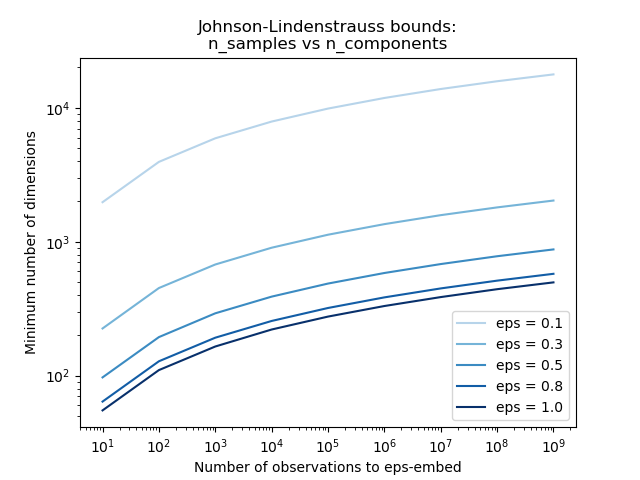
第二个图显示,对于给定的样本数 n_samples,允许失真 eps 的增加可以大大减少最小维度数 n_components。
# range of admissible distortions
eps_range = np.linspace(0.01, 0.99, 100)
# range of number of samples (observation) to embed
n_samples_range = np.logspace(2, 6, 5)
colors = plt.cm.Blues(np.linspace(0.3, 1.0, len(n_samples_range)))
plt.figure()
for n_samples, color in zip(n_samples_range, colors):
min_n_components = johnson_lindenstrauss_min_dim(n_samples, eps=eps_range)
plt.semilogy(eps_range, min_n_components, color=color)
plt.legend([f"n_samples = {n}" for n in n_samples_range], loc="upper right")
plt.xlabel("Distortion eps")
plt.ylabel("Minimum number of dimensions")
plt.title("Johnson-Lindenstrauss bounds:\nn_components vs eps")
plt.show()
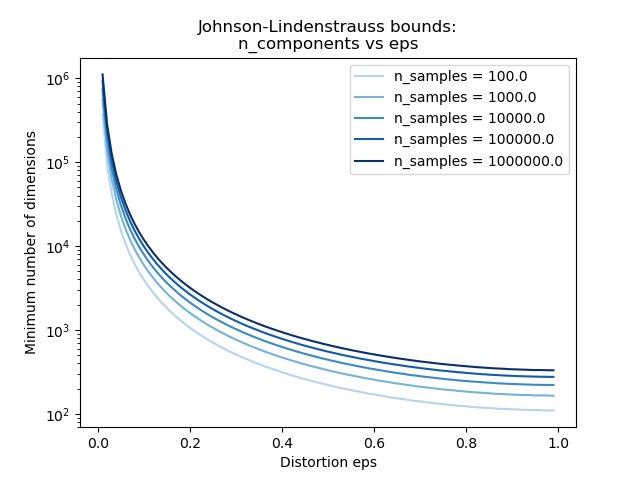
实证验证#
我们在 20 newsgroups 文本数据集(TF-IDF 词频)或 digits 数据集上验证上述界限
对于 20 newsgroups 数据集,总共约有 300 个文档,具有 10 万个特征,使用稀疏随机矩阵投影到具有各种目标维度数
n_components的较小欧几里得空间。对于 digits 数据集,大约 300 张手写数字图片的 8x8 灰度像素数据被随机投影到具有各种较大维度数
n_components的空间。
默认数据集是 20 newsgroups 数据集。要在 digits 数据集上运行示例,请将 --use-digits-dataset 命令行参数传递给此脚本。
if "--use-digits-dataset" in sys.argv:
data = load_digits().data[:300]
else:
data = fetch_20newsgroups_vectorized().data[:300]
对于每个 n_components 值,我们绘制:
样本对的 2D 分布,其中原始和投影空间中的成对距离分别作为 x 轴和 y 轴。
这些距离比率(投影 / 原始)的 1D 直方图。
n_samples, n_features = data.shape
print(
f"Embedding {n_samples} samples with dim {n_features} using various "
"random projections"
)
n_components_range = np.array([300, 1_000, 10_000])
dists = euclidean_distances(data, squared=True).ravel()
# select only non-identical samples pairs
nonzero = dists != 0
dists = dists[nonzero]
for n_components in n_components_range:
t0 = time()
rp = SparseRandomProjection(n_components=n_components)
projected_data = rp.fit_transform(data)
print(
f"Projected {n_samples} samples from {n_features} to {n_components} in "
f"{time() - t0:0.3f}s"
)
if hasattr(rp, "components_"):
n_bytes = rp.components_.data.nbytes
n_bytes += rp.components_.indices.nbytes
print(f"Random matrix with size: {n_bytes / 1e6:0.3f} MB")
projected_dists = euclidean_distances(projected_data, squared=True).ravel()[nonzero]
plt.figure()
min_dist = min(projected_dists.min(), dists.min())
max_dist = max(projected_dists.max(), dists.max())
plt.hexbin(
dists,
projected_dists,
gridsize=100,
cmap=plt.cm.PuBu,
extent=[min_dist, max_dist, min_dist, max_dist],
)
plt.xlabel("Pairwise squared distances in original space")
plt.ylabel("Pairwise squared distances in projected space")
plt.title("Pairwise distances distribution for n_components=%d" % n_components)
cb = plt.colorbar()
cb.set_label("Sample pairs counts")
rates = projected_dists / dists
print(f"Mean distances rate: {np.mean(rates):.2f} ({np.std(rates):.2f})")
plt.figure()
plt.hist(rates, bins=50, range=(0.0, 2.0), edgecolor="k", density=True)
plt.xlabel("Squared distances rate: projected / original")
plt.ylabel("Distribution of samples pairs")
plt.title("Histogram of pairwise distance rates for n_components=%d" % n_components)
# TODO: compute the expected value of eps and add them to the previous plot
# as vertical lines / region
plt.show()
Embedding 300 samples with dim 130107 using various random projections
Projected 300 samples from 130107 to 300 in 0.270s
Random matrix with size: 1.304 MB
Mean distances rate: 1.02 (0.17)
Projected 300 samples from 130107 to 1000 in 0.897s
Random matrix with size: 4.326 MB
Mean distances rate: 1.01 (0.09)
Projected 300 samples from 130107 to 10000 in 8.912s
Random matrix with size: 43.248 MB
Mean distances rate: 1.01 (0.03)
我们可以看到,对于较低的 n_components 值,分布很宽,有许多失真的对和偏斜分布(由于左侧零比率的硬限制,因为距离始终为正),而对于较大的 n_components 值,失真得到控制,距离通过随机投影得到了很好的保留。
备注#
根据 JL 引理,投影 300 个样本而没有太多失真将需要至少几千个维度,而与原始数据集的特征数量无关。
因此,在 input 空间中只有 64 个特征的 digits 数据集上使用随机投影没有意义:在这种情况下,它不能实现降维。
另一方面,在 twenty newsgroups 上,维度可以从 56,436 降至 10,000,同时合理地保留成对距离。
脚本总运行时间: (0 minutes 12.171 seconds)
相关示例
